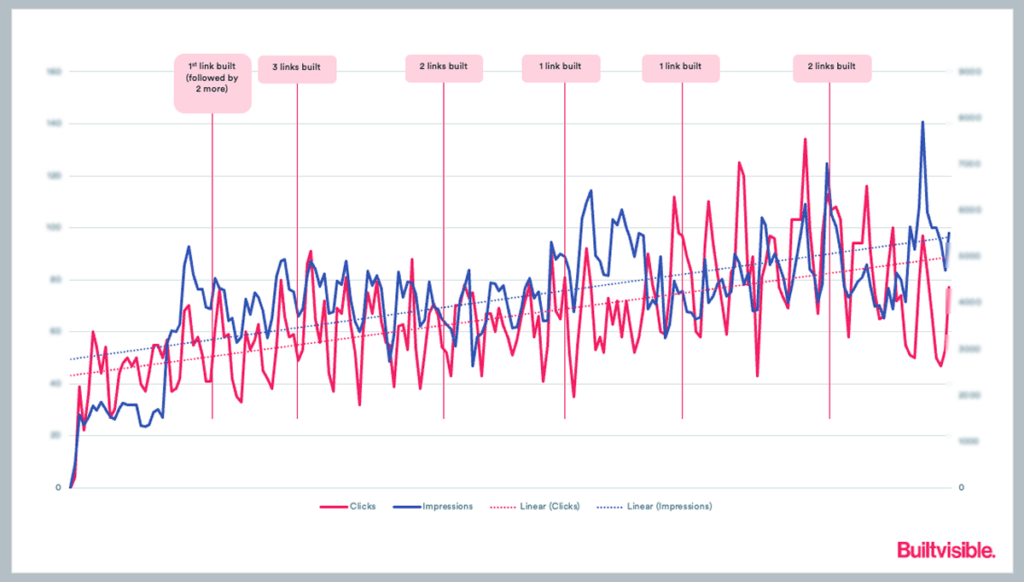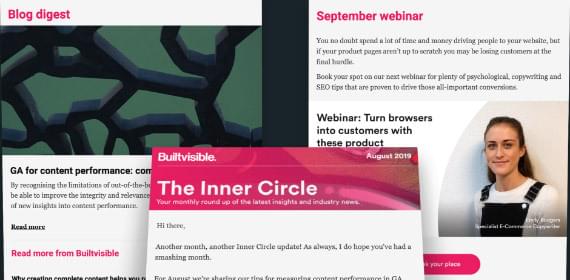Why link numbers aren’t always the right measure of success
The market is increasingly competitive, with stakeholders and businesses under growing pressure to provide tangible evidence of effectiveness for Digital PR work. The most obvious way to demonstrate this is through raw link numbers, often leading the push for high targets in order to prove that the Digital PR team has been working hard enough.
Big link targets for pages that might not even benefit from link building can lead to marketers commissioning big, expensive campaigns. As well as wasting time and money, and causing a lot of stress, chasing high numbers of links in irrelevant publications when a few relevant ones would have achieved a more tangible return is nonsensical.
Time and again, we have seen the link quality and relevance approach yield results, even when it reveals that only one or two links to specific pages are what’s needed to see genuine ROI.
Of course, any worthwhile link-building strategy should tell you what each activity will generate in ROI terms. We use a method that we call Opportunity Sizing. This helps us generate a list of pages that need links, alongside their estimated associated numbers and quality needs, to determine the type of link-building campaign activation we should execute.
We then use Builtvisible Forecaster to model your current organic trajectory, This allows us to overlay the Digital PR opportunity and evaluate the real-world impact we’d expect to see, before Opportunity Sizing’s incrementality is folded into the model.
How to determine the right link-building activation for your brand
Here’s an example of our process in action:
If a ‘link needy’ page requires a high number of links or a substantial boost to its Trust Flow, then it will likely fall into our growth campaign category, e.g. larger-scale Digital PR campaigns that tend to have supporting visual assets or development time. Alternatively, if a page “only” needs one or two links, then it’s likely to need a small-scale campaign or ongoing tactical link building activity, which we call flexible link building.

Equally as important as knowing how many links we need to aim for is understanding the type of link building we need. There’s no point in misusing valuable resources on a content marketing campaign if your client needs something more traditional, such as broken link building support, which an ongoing stream of BAU link building can accommodate.
No campaign? No problem.
For example, one leading insurance client we work with saw impressive uplift in clicks and impressions on the target page identified as needing links. Our activity included no large-scale growth campaign at all. It wasn’t even a campaign. Instead, what moved the needle was some highly focused tactical link building, utilising existing content to build high-quality and highly relevant links from several authoritative .ac.uk and .org sites.

Graph shows increase in clicks and impressions alongside link building activity within a 6 month period.
Across brands and sectors, we’ve repeatedly seen big impact from low link numbers.
The power of a handful of high-quality links
Not yet convinced that less can be more? Take this example of a relatively new site reaping the benefits of highly relevant, focused, and quality links, where no other activity was occurring. The perfect opportunity to show how even just a few strong links can make a big difference.
We started a tactical link building project for a leading small business software site, offering their existing content to small business hubs for inclusion on their resource pages. This tactic gained over 10 links and saw their average ranking position increase by 14 places, with an increase in impressions of almost 300% for the existing content page.
We followed this up with a small-scale digital PR campaign that secured 18 links along with 4 additional pieces of coverage. This improved visibility by 4% in a short period of time, with an average rise in impressions across all target pages of over 76%.
Almost 92% of the links we built had a Topical Trust Flow in the Business/Small business niche, and the average Trust Flow across the activity was 25, highlighting how relevant links may be small, but they can also be mighty.
How to ensure link building has a positive impact
In recent years, we’ve had countless discussions with prospects who expect to see strategies for growing backlink portfolios via a highly bespoke list of link building tactics, to action at pace and which are relevant to those pages that are most likely to drive additional revenue.
To that, we say: no one link building strategy should – or will ever be – the same as another. We assess every client’s unique requirements on a case-by-case basis, determine which method is likely to garner the most amount of revenue, and go from there. Through our proprietary SEOCausal product, we can also retrospectively analyse the benefit of a new link and even compare the uplift of building a link versus what would have happened without it.
Learn how SEOCausal can prove the impact of link building.
We should also note that, while a few relevant and trustworthy links can bring about huge benefits, technical and on-page integrity is a performance necessity, too, as no poorly optimised page can succeed on links alone.
Final thoughts
I don’t anticipate the excitable tweets about scoring a host of links to stop anytime soon. And, to be clear, I don’t want them to. People should be loud and proud. But before you sign off on a high-investment campaign with a shedload of promotion time attached to it, I hope you remember this post and take a step back to assess exactly what results your planned activity will get, and whether it’s the right approach. Sometimes, securing one or two relevant and well-placed links to key pages is the golden ticket.
If you’re thinking now that your Digital PR strategy isn’t quite right, get in touch with our team today.
